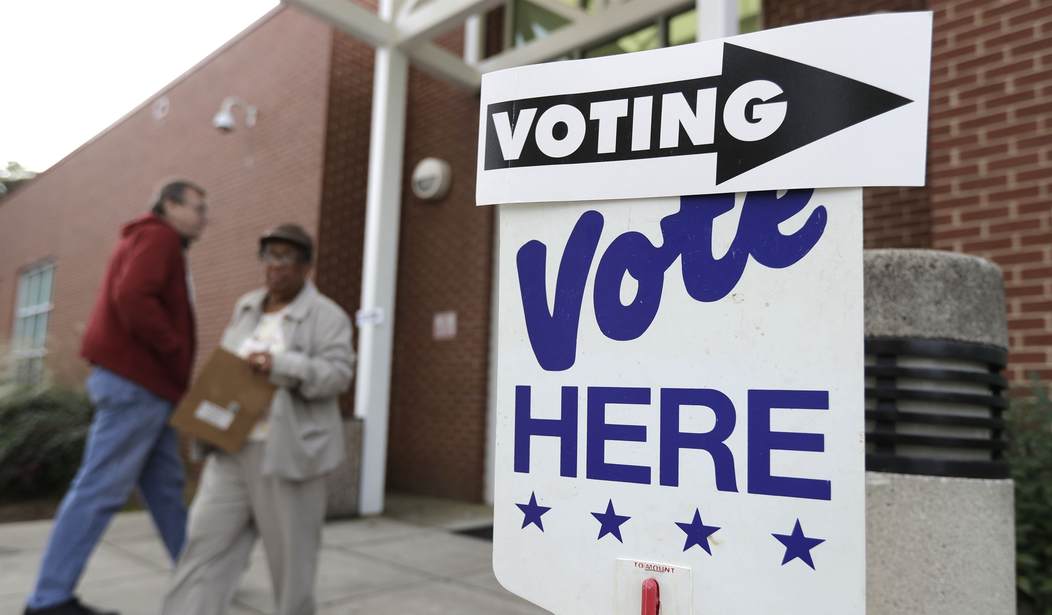Political prognosticator Larry Sabato has been gazing into his crystal ball at the University of Virginia for 20 years and has seen it all — the Democratic wave of 2008, the GOP tsunami of 2010, and smaller gains and losses from both parties.
But Sabato looked at all the factors affecting this year’s midterm election — redistricting, Biden’s unpopularity, GOP messaging — and has concluded that the Republican battle cry for 2022 should be “Drive for 35” — winning a net of 35 seats would give the GOP 248 seats in the next Congress. It would be the largest majority the Republicans have held since the Great Depression.
For the Republican National Committee, it’s a “target-rich environment.” The GOP is targeting no fewer than 70 Democratic seats. And even in states where Democrats are desperately trying to gerrymander seats by drawing unfavorable lines for Republicans, there will be opportunities for GOP pickups.
Republicans won 213 House seats in 2020, so that is our baseline starting point for this exercise. They will be losing 1 of their 3 seats in West Virginia because of the state’s loss of a House seat in reapportionment (-1; here begins the running tally of Republican gains that you’ll see in parentheses throughout this section). They also appear likely to lose 2 seats in Illinois because of Democratic gerrymandering, as 1 of their 5 current seats is eliminated and another, IL-13, is turned into a seat that Democrats should flip (-3). However, Republicans could plausibly flip Democratic-held seats in Illinois: IL-17 is an open, Biden +7 seat in the west, and they could perhaps pick off a suburban Chicago seat — IL-6 is set to see a potentially contentious member-vs-member Democratic primary — to offset their other losses there and maintain 5 seats in the delegation (-1).
Democrats in Illinois and New York have been absolutely shameless in rigging district lines to maximize their advantages. This is the party that screams bloody murder when Republicans practice the art of political gerrymandering to eliminate Democratic districts.
Pennsylvania may be a bellwether on election night. If things go the GOP’s way there, the sky’s the limit.
While it’s hard to tell what Pennsylvania’s districts will look like — like in Wisconsin, there is divided government, so the state Supreme Court may once again end up drawing the maps — Democrats hold most of the state’s marginal districts. Rep. Matt Cartwright (D, PA-8) will likely retain a Trump-won seat, while Rep. Susan Wild (D, PA-7) will probably run in whatever seat contains the Lehigh Valley, an area that often mirrors the state as a whole — which is to say, swingy. Rep. Conor Lamb (D, PA-17) is running for Senate and leaving behind an open, narrow Biden seat in suburban Pittsburgh, though its successor district could be one that Trump carried. Under this scenario, a Republican seat is eliminated to account for Pennsylvania losing a seat in reapportionment, but Republicans flip these 3 swing seats, giving them 11 of Pennsylvania’s 17 seats (+33).
Now it becomes clear why Democrats are so desperate to pass “voting rights” bills. Since they can’t win at the ballot box, they need to legally manipulate the political landscape to give them maximum clout. All this talk of “democracy in danger” and the “right to vote under attack” is a smokescreen to gin up fear and loathing of Republicans and forestall what is looking more and more like a tidal wave that will swamp Joe Biden and the Democrats in November.










Join the conversation as a VIP Member